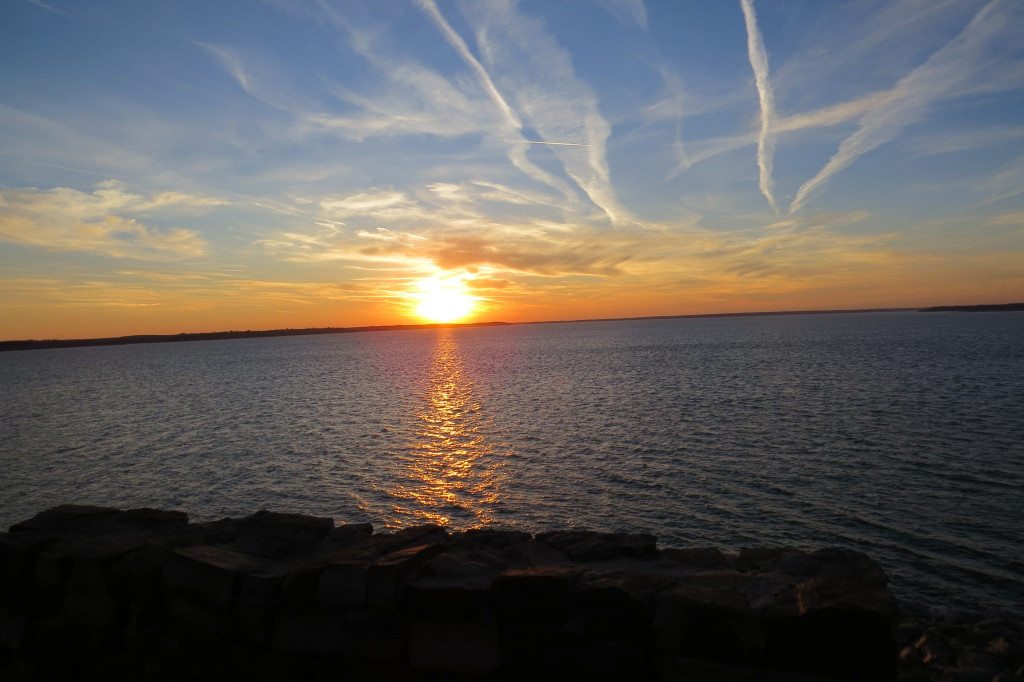The 10th Harlan County Christmas Bird Count (CBC) took place 14 December and, like last year, it set a record in regards to the total number of species observed. Previous Harlan County CBC’s were held in consecutive years from 1996-2001 and the CBC resumed in 2014. Below, I provide a summary of the results from the 2017 edition of the Harlan County CBC.
Conditions: December has been relatively mild and that was definitely the case before and the day of the Harlan County CBC. Essentially all water bodies were ice free, including the Alma sewage lagoons, which is a big deal since that is a spot certain species (e.g. Northern Shoveler) will linger into early winter unless the lagoons freeze over. Low temperature was about 28 degrees and the high got up to 46 degrees. Winds were calm and the sun was out in the morning, but a breezy north wind and clouds took over in the afternoon.
Species total: Fifteen observers tallied 96 species, which smashes the record of 90 species reached in 2016. Prior to 2016, the previous record was 85 species recorded in 1998 and 1999. The Harlan County CBC is the only count, other than Lake McConaughy, in Nebraska to reach and surpass 90 species.
New CBC species: The only species never recorded on any previous Harlan County CBC was Marsh Wren. It was a nice find and perhaps it was sticking around because of the relatively mild weather.

Other notable species: A juvenile Mew Gull was perhaps the best bird found during the CBC. An adult Mew Gull found in 2015, so it was not a new species for the CBC. Other good birds included Wood Duck (2), Greater Scaup (2), Ruddy Duck (1), Killdeer (2), Wilson’s Snipe (3), California Gull (1), Barred Owl (1), Yellow-bellied Sapsucker (1), Loggerhead Shrike (1), Winter Wren (1), Ruby-crowned Kinglet (3), Swamp Sparrow (1), Rusty Blackbird (4), Purple Finch (3) and Red Crossbill (24).
Record high counts: The 77,120 Snow Geese was a new high count for that species, topping the 56,700 tallied just last year. Increasing Snow Goose numbers appears to be a trend. During the first iteration of the CBC during the period 1996-2001 no more than 895 were recorded, but since 2014 Snow Geese have numbered no less than 22,444 in any one year. Another notable high count likely reflecting an emerging trend was the 4 Lesser Black-backed Gulls. This species was unrecorded from 1996 to 2001, but singles were found in 2014 and 2016. I suspect Lesser Black-backed Gulls numbers will continue to slowly increase and it will become a staple of future Harlan County CBCs. Other high counts included 62 Northern Shoveler (besting the 61 in 1999), 2 Greater Scaup (1 in two different years), 6 Great Blue Herons (4 in two different years), 46 Northern Harriers (29 in 2015), 123 Red-tailed Hawks (69 in 2015), 128 Rock Pigeons (78 in 2015), 39 Red-bellied Woodpeckers (33 in 2000), 48 Downy Woodpeckers (43 in 1999), 5 Carolina Wrens (4 in 2016), 246 White-crowned Sparrows (116 in 2016), 69 Brown-headed Cowbirds (32 in 2000).

Record low counts: None to report.
Biggest misses: Pine Siskin was the biggest miss as it has been recorded on eight of the nine previous counts. The only other notable miss was Iceland (“Thayer’s) Gull (7/9) and perhaps American White Pelican (4/9), especially when considering the mild December.
Biggest absence: As I pointed out in this summary last year, there is a distinction between missing a species that is expected to be present and missing a species because it is no longer around. For the third straight year no Black-billed Mapgies were recorded. During the first iteration (1996-2001), Black-billed Magpies were recorded every year (average number tallied was 24). In 2014, only 3 were found. The results for the past three years are just more evidence of the decline of this species in the state, a topic that was discussed in a previous blog post.
Other observations: Yellow-bellied Sapsucker has now been recorded in all years during the period 2014-2017, but it was unrecorded during the first iteration of the CBC (1996-2001). Barred Owl was recorded for only the second time, the first being in 2016, and both observations were from the upper end of Harlan County Reservoir. These observations indicate this species is now established along the Republican River corridor west of the lake.

Participants: Many thanks to individuals that did a great job counting birds. This year’s participants were Lauren Dinan, Andrew Furman, Robin Harding, Joel Jorgensen, Clem Klaphake, Bette Klaphake, Jonathan Nikkila, Don and Janis Paseka, Lanny Randolph, Gary Roberts, Kyle Schumacher, Ross Silcock, Nick Varvel and T.J. Walker.
To see the full rundown for 2017, click on this 2017 Summary_x.
Thanks again to all the participants and see you in 2018!
Good birding!
The post Harlan County CBC recap – another record-smasher appeared first on NEBRASKALand Magazine.















